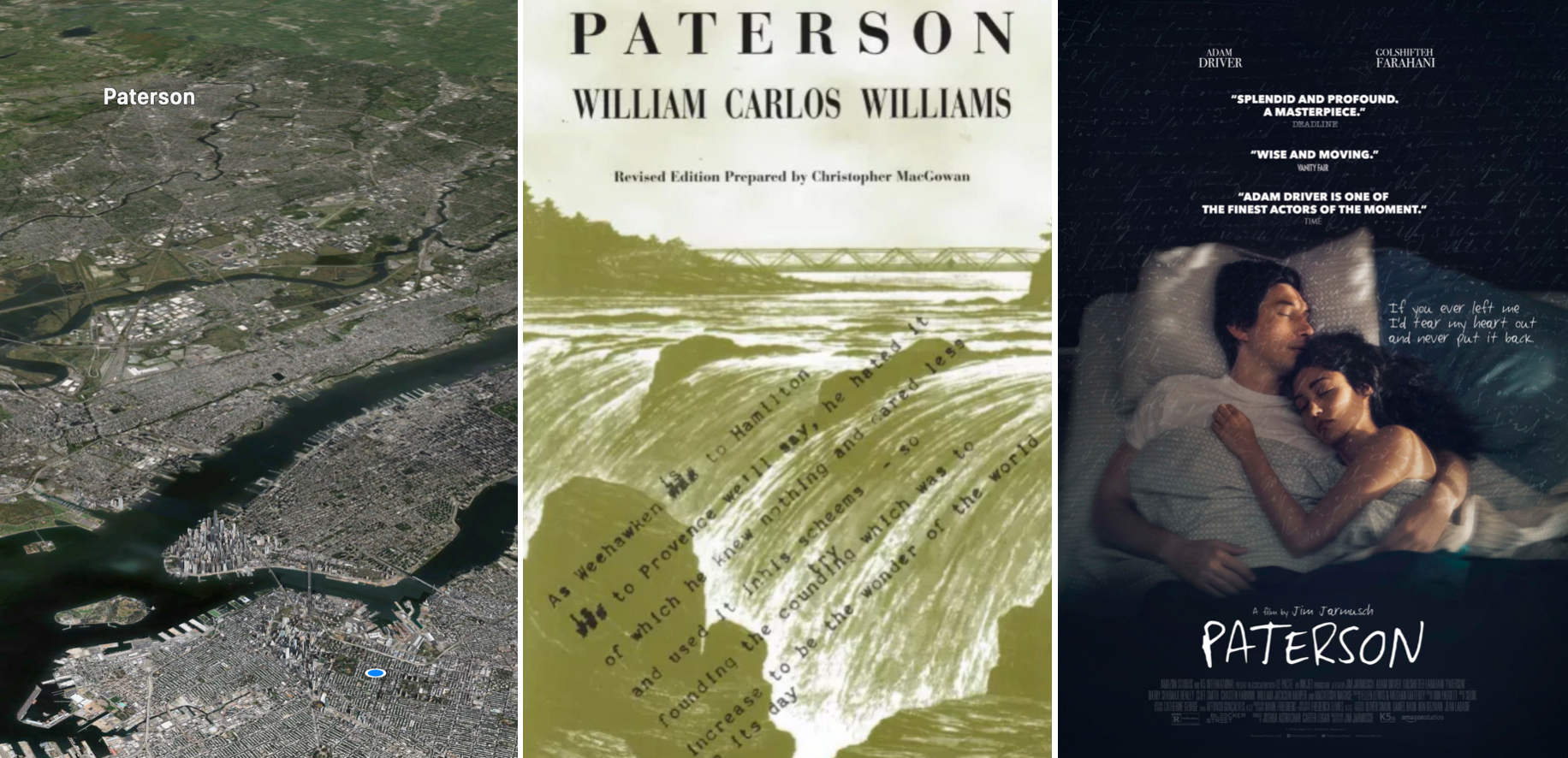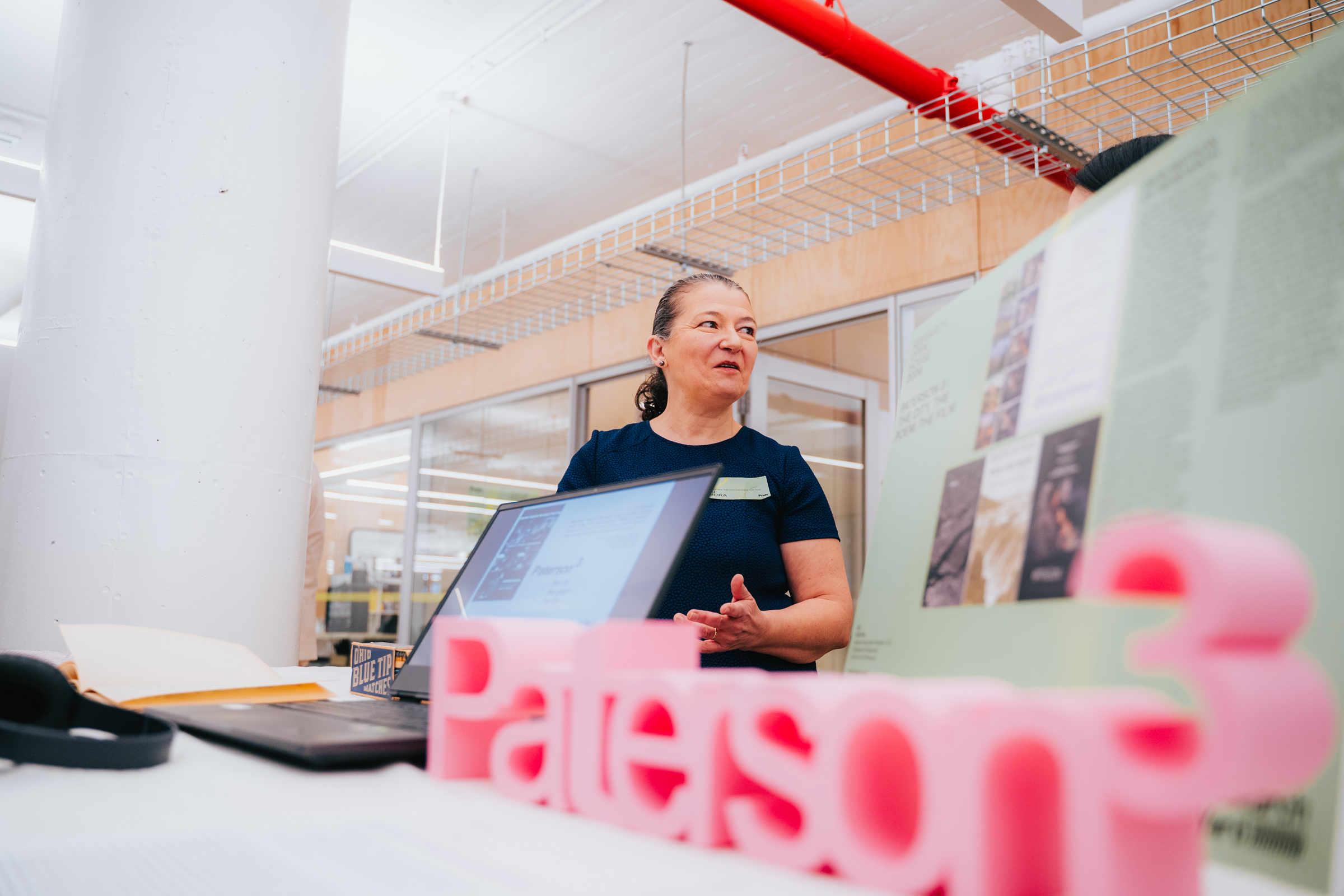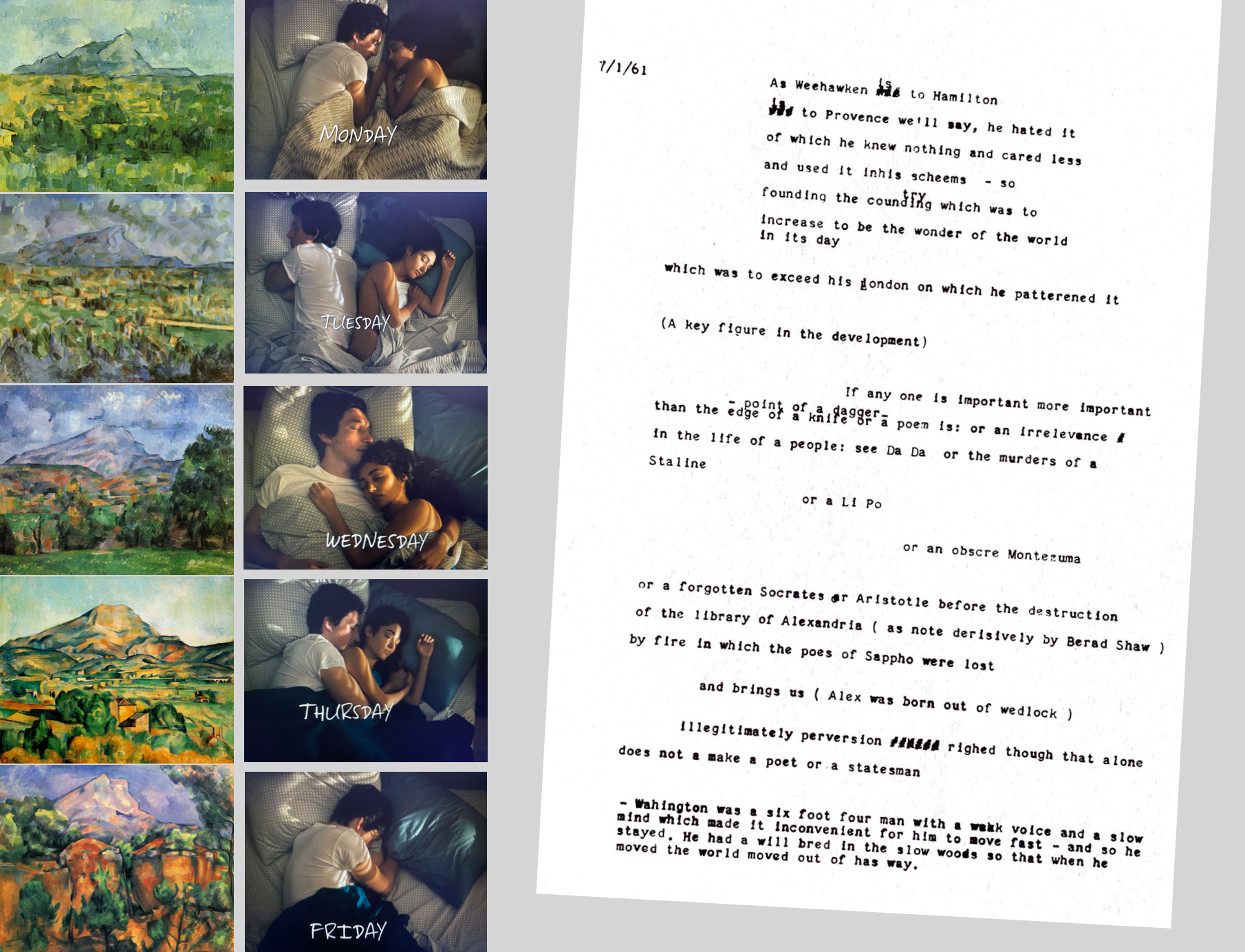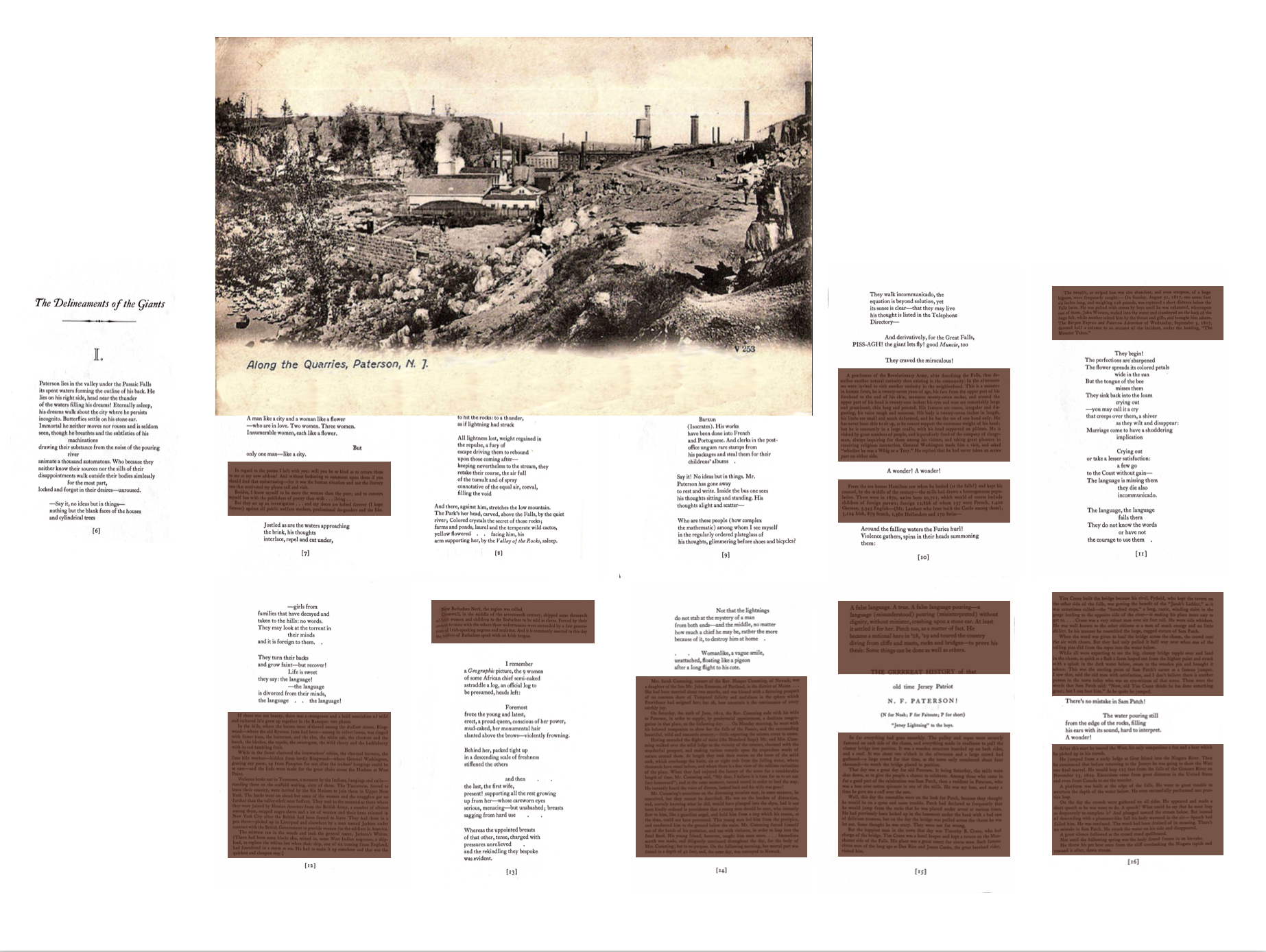Paterson 3: The City, The Poem, The Film

MJ Sieira
School of Architecture

This paper examines productive adaptations in the work of the poet Williams Carlos Williams and the filmmaker Jim Jarmusch as seen through a spatial architectural lens. Three Patersons: Paterson the prototypical American city in New Jersey, but also within range of the New York metropolitan region, with a history that begins in the Revolutionary war; Paterson the book-length poem by Williams started a couple of years after his seminal Spring and All was published in 1923 but with so many starts and stops that the first part of it, Book I, was not published until 1946; and Paterson the 2016 film by the American director Jim Jarmusch, one that draws on both the city and the poem.
What we have here is a series of adaptations–the poem is a kind of adaptation of the city and the film is a kind of adaptation of both the city and the poem–so no one better to bring to the table than the early film theorist André Bazin. An adaptation that is measured by its fidelity assesses the distance between what is adapted and what results from the adaptation. Bazin went beyond fidelity of plot and place to assess how an adaptation reproduced an artist’s / author’s aesthetic universe. This paper uses Bazin’s thinking on adaptation to find productive intersections between Paterson the mid-size city in New Jersey; Paterson the book-length poem by William Carlos Williams, written in the 1940s and 1950s about said city, one that he considered to be prototypical America; and Paterson the 2016 film by Jim Jarmusch, one that spatializes the poem through the city. The paper will focus on the first part of the book titled “The Delineaments of the Giants,” in which, as in the rest of the book, Williams introduces large sections of found text (or text by Williams in the style of a found text).
These found texts in “Delineaments,” and elsewhere in Williams’ Paterson, function as concrete times and places that slow down the poem. Jarmusch similarly introduces in his Paterson a series of delays with the daily tasks of the film’s protagonist, also named Paterson, ones that take place in real time. Both the book and the film allude to the embodiment of the city, one that, like the film and the poem, has its own aesthetic universe. By positing that adaptation is not bound by causality—the adaptation of A resulting in B—but rather, that it can be used as an investigative tool, the three Patersons, the city, the poem, and the film, can be layered to find productive overlaps that both challenge and intensify isolated individual readings.

